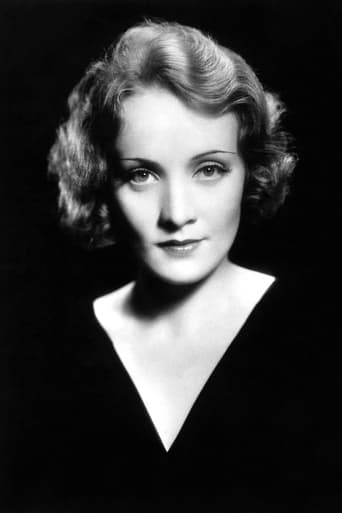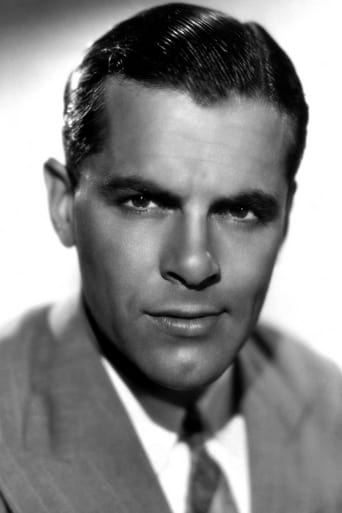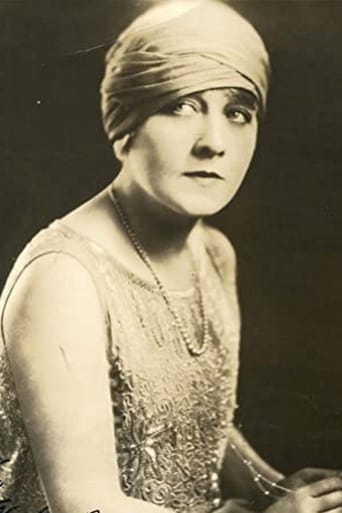BootDigest
Such a frustrating disappointment
Raetsonwe
Redundant and unnecessary.
StyleSk8r
At first rather annoying in its heavy emphasis on reenactments, this movie ultimately proves fascinating, simply because the complicated, highly dramatic tale it tells still almost defies belief.
Josephina
Great story, amazing characters, superb action, enthralling cinematography. Yes, this is something I am glad I spent money on.
Gizmo
There's a case to be made that the Dietrich/Sternberg films may actually have been better as silent films, as a lot of the time the talkiness is the weakest, creakiest part, especially when compared to the images, which are so immaculate. Almost every frame of this film would look great blown up and mounted on a wall, and Dietrich looks like a religious icon most of the time, especially lit by candlelight during the wedding scene.The excesses of this film are second to none, and for sheer lurid spectacle, you can only really compare it to Cecil B DeMille, though this is a far more beautiful and well-told tale than anything DeMille ever made. There's nudity and adultery and torture and all that good pre-code stuff that would disappear from Hollywood screens for decades only a year later. This was the last gasp of freedom and it's a gasp everyone should share at least once.
Ian
(Flash Review)This is a cinematically beautiful and conceptually eerie historical account of the rise of Catherine the Great. Purposefully shot with rich black & whites, the visual qualities paint the picture of the machine-like world of tradition she will find herself within. Born as Princess Sopfia of Germany, she is more or less forced into a marriage of a literal half-wit Duke of the Russian Empress with a goal of generating a son. The intelligent and savvy being Catherine is has no interest in the half-wit. How will she uphold her duty of extending the royal lineage? Will she become friend or foe to the Empress? The tone of this film is heavily told through unusually striking set pieces of peculiar eeriness, for their expected usage, as well as a great music score and scenes focused on opulent traditions vs human warmth. During the royal wedding, Catherine is barely even visible amongst the pomp and circumstance of the event. A very impressive film for the era with an original twist on the expected.
fbarthet
I saw "The Scarlet Empress" many times. On TV, in movie theaters. I cannot simply imagine the world without that film, certainly in my Top Ten Favourites list.Style is the first word that came to my mind when I think of von Sternberg (he added the von to his name but he clearly deserves it). And "The Scarlet Empress' is purely "un exercice de style". People often use the concept of "Expressionism" to describe the photography or the ambiance of the film but it is simply because it is not a classical Hollywood movie in style or in atmosphere. There is nothing strictly "Expressionist" in "The Scarlet Empress" as the expression of emotions is definitely secondary to the creation of a style as a "raison d'etre". The early years of Catherine the Great (before she even become Catherine the Great) as described by von Sternberg are not corresponding to a strict historical version. This is not the point. This is about the transformation of a woman from a tender, naive and gentle "Prussian rose" into a Machiavelian, merciless praying-mantis, cold as steel, hot as Hell. It is probably a bit stretched, but I find a lot of similarities between the depiction of how Sophia Frederica became Catherine the Great and the personal story of Marlene Dietrich. When she was chosen by von Sternberg for the role of Lola Lola, she was active in German show business for years. At that time, she was a bit plump, more "the girl next door" than "she who must be obeyed". Then, "Der Blaue Engel". Then Hollywood, a few more movies with her "creator" and the woman became Legend, something out of this world.in a way, the character played (quite well) by John Lodge reminds me of von Sternberg in front of Marlene. When Sophia Frederica sees the handsome, dashing and fascinating Russian envoy, it is Marlene at the time where she was just another actress in the boiling last years of the Weimar Republic. The Count seduces her, makes her falling for him (easily after she discovered her future husband is a raving maniac looking like a monkey on acid). And then, the brutal wake-up: he is the lover of the reigning empress! The little princess throws her broken heart in the sewer and decides to reject everything she was previously: a bit like what did "La" Dietrich after she arrived in Hollywood. And this is were I see the comparison between the character of John Lodge and von Sternberg. Von Sternberg tried to keep the evasive Marlene under his spell for years, making six more movies with (for) her. But she was far away already, long ago. And the face of John Lodge when he discovers than he will never be Catherine the Great's lover, simply because he played with her heart and betrayed her naive love, is a kind of symbol of the filmmaker losing his grip on his creature. But was she ever HIS creature?Of course, Marlene dominates the film. She is radiant, more beautiful and glamorous than in any other movie. She is also excellent. She plays, at 33, the young, virginal princess very convincingly, her great doe-like eyes constantly moving from one surprise to another. After the betrayal of the man she thinks she loves, she becomes a kind of Nietschian character, bigger than life, cynical and ruthless. But the close-up of her face, after she dismissed John Lodge and now waits for the Count Orlov, her new caprice, shows a distressed woman. A woman who was betrayed by her first love, and whose revenge is bitter-sweet, if not pathetic.The other actors are all brilliant but Louise Dresser as the empress Elisabeth and Sam Jaffe as the Grand Duke Peter, respectively mother in law and husband of Catherine, are particularly outstanding. Louise Dresser plays herself a cynical and ruthless empress who knows her weaknesses but put the destiny of Russia about everything. Sam Jaffe, well, was the character actor by excellence, able to play a Russian Grand Duke or Gunga Din. His Peter is an absolute maniac but he manages to make him more pathetic and pitiful than monstrous. In the end, he is a poor fellow too small for his own crown. You feel almost sorry for him when he dies.Von Sternberg acted as a real demiurge in this movie, controlling/creating everything: lights, camera angles and moves, sets and costumes. It gives to the movie this extraordinary atmosphere not only of total art but of fantasy as well (the scenes of rapes and tortures could not have been made six months later, many thanks to the Hays Code). It is extremely claustrophobic in spite of the size of the sets as almost all the action occurs in the imperial palace which looks like a Gothic castle, Russian style.During the wedding scene, one cannot forget the close-up on Marlene's face, her eyes terrified and fascinated as well, and the flame of the candle in her hand bending under her invisible breath, like a heartbeat.
Anthony Dolphin (santasprees)
All the mutually-mated and mutated blue blood of the courts of Europe must have curdled into a brain-stunting stew long before 1760, so its fitting that Von Sternberg's vision of the Russian dynasty is so damaged and deranged, importing fresh Prussian genes (Dietrich as Catherine) to arrest the degenerative slide. Sam Jaffe's Grand Duke Peter (later, briefly, the Emperor Peter III) is Harpo Marx cross bred with Tiny Tim on the Island of Dr Moreau. Marlene Dietrich's Catherine, after an initial doe-eyed turn as an innocent, is an automaton of desire, arousing with one hand, castrating with the other, at once a vixen and a shrew shot through gauze and candles by a permanently stimulated lens. At its (wordless) best, a feast of ragingly intemperate psycho-sexual and psycho-historical motifs in a wobbly frame.





